(Editor’s note: This article originally appeared in the January/February 2016 issue of Roast Magazine. Links have been added for context.)
The story of specialty coffee in Nariño, Colombia, is a story of separation. It’s a story that began in 1945, when Enrique Vásquez, a young paisa from Medellín, ventured to lower Manhattan to learn the coffee trade at the Colombian coffee trading firm Adolfo Aristazábal. Seven years later, the company sent him back to Colombia to set up operations in Pasto, a sleepy provincial capital in southwestern Colombia with little coffee, few cars and fewer banks. Before long, Vásquez bought out his partners in New York and rebranded his family-owned export business Empresas de Nariño.
When Vásquez arrived in Nariño’s capital in 1952, the region was producing fewer than 20,000 bags of coffee annually, and every weekend he would leave Pasto with bags full of cash to pay growers. Things have changed since then. Last year, Nariño produced around 450,000 bags of coffee, and many of the farmers who grew it were paid through smart-card technology and direct deposits to their bank accounts. But the biggest changes in Nariño’s coffee culture over the past 60 years may be in way the coffee is brought to market.
From the beginning, Empresas de Nariño worked to find markets for single-origin coffees from Nariño, but most of the region’s coffee was blended with coffees grown in other regions for export under a generic “Colombian Coffee” brand. All that began to change in the late 1980s with the arrival of Starbucks.
Starbucks Brings Separation to Nariño
Andrew Linnemann, Starbucks vice president of global coffee quality and engagement, still recalls the first time he tasted a single-origin Nariño, nearly a quarter century ago.
“Everybody has that ‘aha!’ moment in their coffee journey,” Linnemann says. “For many people, it is the first time they try an Ethiopian natural. For me, it was in 1993, during a coffee training class, when I tried our Colombia Nariño Supremo. It just smelled and tasted very different from every other coffee I had tried before.”
When Starbucks began selling its single-origin Colombia Nariño Supremo in 1989, it was the first time the region’s distinctive coffee profile had been presented to coffee consumers in the United States. The response was extraordinary, and the Starbucks-Empresas de Nariño relationship continued to evolve. During the early 2000s, Starbucks was buying almost all the coffee grown in Nariño. In 2004, the region became a testing and proving ground for the Starbucks C.A.F.E. (Coffee and Farmer Equity) Practices standards.
“We weren’t interested just in buying great coffee at the most favorable price,” says Linnemann. “We were also interested in working together to do what we could to help coffee communities there.”
Coffee’s Third Wave Furthers Separation
By the late 2000s, Nariño’s coffee sector was considerably more crowded. Nespresso partnered with the Federación Nacional de Cafeteros in 2004 and began sourcing large volumes of coffee from Nariño to keep up with exploding demand for its single-serve capsules. Several years after that, pioneers of coffee’s “third wave” began arriving, looking to drill down beyond the “Nariño” label and source fully traceable single-farm and community lots.
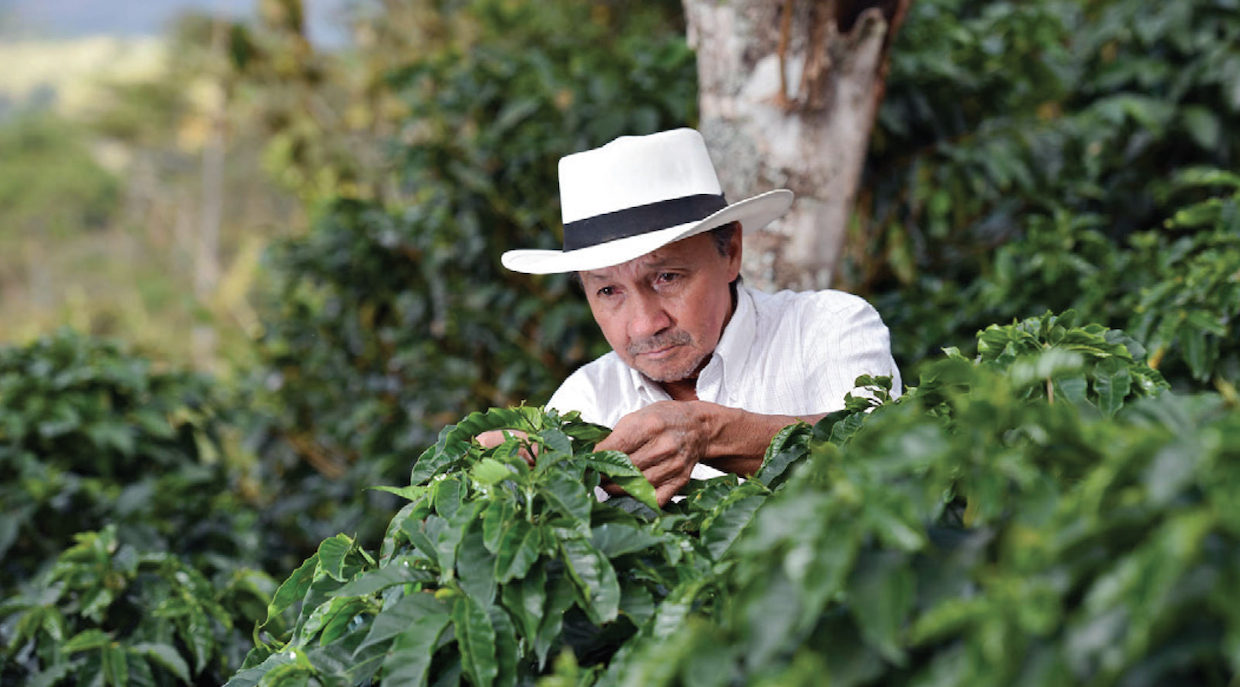
Grower Carlos Jesús Ortega is one of thousands of smallholders throughout Nariño increasing their focus on quality. Photo by Neil Palmer/CIAT for CRS.
One of the first to arrive was Aleco Chigounis, who bought his first Nariño lots for Stumptown Coffee Roasters in 2007, a time when few U.S. buyers were poking around the back roads of Nariño’s coffeelands.
“George Howell was traveling with us back then,” Chigounis recalls, “and Kevin Cuddeback from Gimme! Coffee.” Maritza and Jeff Taylor of PT’s Coffee soon followed, striking up a lasting relationship with the Jesuit-run Finca Villa Loyola, which won the 2008 Colombia South Cup of Excellence competition.
There weren’t many of those early “third wave” buyers in Nariño, but they have been loyal. Chigounis has continued to source coffees from Nariño, even as he moved from Stumptown to Coffee Shrub to Red Fox Coffee Merchants, the sourcing company he opened in 2014. He says it’s the “classic Nariño profile” that keeps him coming back.
“Ripe fruit sweetness, dark fruits, grape hard candy, ripe plum, concord grape and blackberry are common among the better coffees,” he explains. “I think bright, sweet citrus plays a big role as well.”
The 2010 Cup of Excellence
Then something truly magical happened. During the 2010 Cup of Excellence competition, held in Nariño, the region produced a perfect coffee.
“That experience will forever be tattooed in my memory,” says Geoff Watts, vice president for coffee at Intelligentsia Coffee. “It was the first time I’d ever awarded a Colombian coffee a perfect 100-point score. It was a mind-bending, unfathomably delicious coffee.”
He wasn’t the only one who thought so.
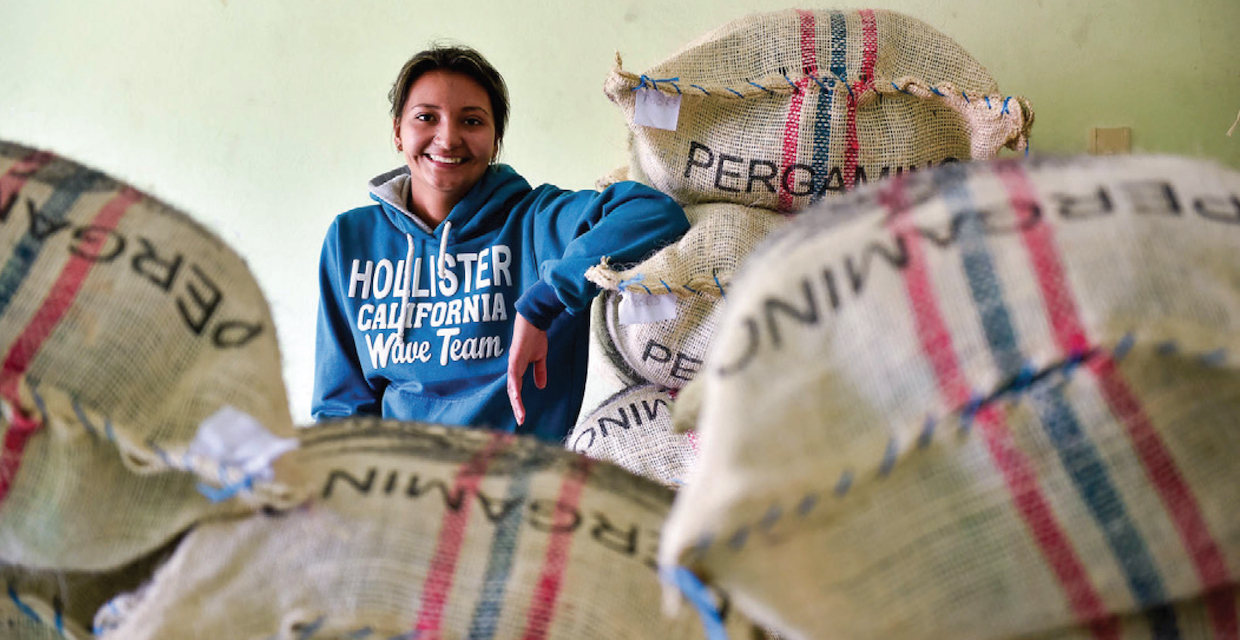
Paola Andrea Trujillo, 24, is one of dozens of young people leading the quality revolution from village warehouses and cupping labs across Nariño. Photo by Neil Palmer/CIAT for CRS.
“Several of the jury members gave it a perfect score, which has only happened a handful of times in over 15 years of the competition,” says Watts, who currently chairs the board of directors at the Alliance for Coffee Excellence, which runs the Cup of Excellence competitions. “I remember it well because we talked about it for 20 minutes. Everyone in the room felt compelled to give it a compliment. The discussion finally concluded when the head judge asked if anyone else needed to say something about the coffee. Kentaro Maruyama [of Maruyama Coffee in Tokyo] stood up and said just two words to express his feelings about it: ‘Thank you!’ That pretty much summed it all up.”
That year, Nariño didn’t just produce one perfect coffee — it produced more than a dozen spectacular coffees and dominated the competition. Growers from Nariño took the top seven spots, eight of the top 10, and 17 of 21 winning lots overall.
Nariño’s secret was out. The whole world seemed suddenly to know what folks like Chigounis and Linnemann had known for years: that Nariño produces some of the world’s finest coffees. But all that exposure didn’t seem to be translating into more or better opportunities for most of Nariño’s smallholder coffee growers, who today number nearly 40,000.
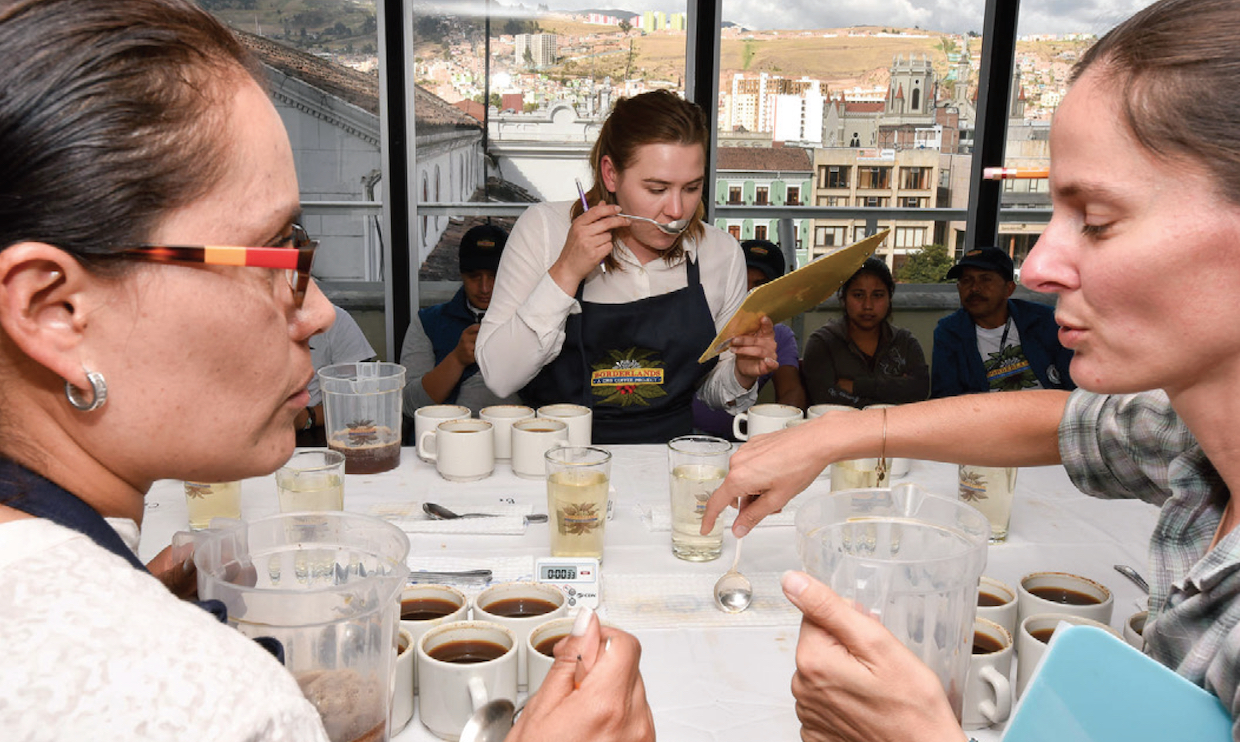
Claudia Rocío Gómez of Sustainable Harvest (center) leads a cupping of coffees from the CRS Borderlands Project, with Katie Carguilo of Counter Culture Coffee (left) and Stacy Bocskor of Allegro Coffee. Photo by Neil Palmer/CIAT for CRS.
The Political Economies of Coffee and Coca
When my organization, Catholic Relief Services (CRS), started working in Nariño in 2011, we conducted a rigorous baseline survey with economists and researchers from the International Center for Tropical Agriculture (CIAT). That survey produced what felt to us like clear evidence of a market failure in Nariño’s coffee sector. Simply put, growers producing extraordinary coffees and buyers seeking those coffees through transparent supply chain relationships weren’t finding each other in the marketplace as easily as they should have been.
Three data points tell the story: 4, 89, and 2. Only 4 percent of growers reported ever earning quality premiums for their coffee, despite the fact that samples collected from randomly selected farms were earning scores higher than 89 points. While almost all of Nariño’s coffee was being sold into the specialty market, less than 2 percent was being sold as fully traceable premium lots.
The lack of supply chain transparency discouraged buyers like Timothy Hill, coffee quality manager at Counter Culture Coffee, from pursuing Nariño coffees for many years.

Geoff Watts has been sourcing from Nariño since he tasted a perfect 100-point coffee as a member of the international jury during the 2010 Colombia Cup of Excellence. Photo by Neil Palmer/CIAT for CRS.
“For years, as a coffee taster, I got used to seeing generic Nariño coffees come into our cupping room,” Hill says. “I never knew if the sample represented one grower or 100, one community or 20. And I never knew what sort of quality practices, if any, were going into the coffee.”
This brings up another data point from the baseline survey that’s worth mentioning: Only 2 percent of growers in Nariño were selling their coffee collectively, making it difficult for buyers to access significant volumes of traceable smallholder coffees. Veterans of the region’s coffee sector advised us not to bother trying to organize growers. They told us there was a streak of fierce individualism in the rugged Andean peaks of Nariño that kept farmers from organizing.
The development of a robust specialty coffee sector in Nariño was impeded by other factors as well, including a thriving coca trade and a complex armed conflict involving the Colombian Army, two guerrilla movements and illegal armed forces composed of ex-paramilitaries. Despite billions of dollars of investment in coca eradication, Nariño’s coca production continues to increase year-over-year. It has been the leading coca-producing department in Colombia for nearly a decade. Some growers prefer coca to coffee because it delivers higher returns, while others are forced to grow coca by armed actors. Because of the ongoing conflict, specialty buyers who may have wanted to develop those origins were unable to access them.

Nariño has been the leading coca-producing department in Colombia for nine consecutive years, and continues to increase production. Photo courtesy of Catholic Relief Services.
Understandably, Hill was less than enthusiastic when we invited him to participate in the CRS Borderlands Coffee Project in Nariño.
“We were not interested in buying coffees from Nariño,” he recalls. “We thought that other regions in Colombia would continue to produce the country’s best coffees — that Nariño had huge potential, but it might not be possible to unite growers and get great lots exported.”
Today, Hill is happy to acknowledge, “We were wrong.”
Correcting a Market Failure
Since 2011, CRS has been working with allies in the coffee industry, policymakers and researchers to address the market failure our baseline survey revealed. We catalyzed a multi-stakeholder analysis of the Nariño coffee chain, convened by Nariño’s government and facilitated by CIAT. That process identified new market opportunities for Nariño’s growers and advanced recommendations for specific actions that could help smallholder farmers seize those opportunities — recommendations the government enshrined in policy and actions it has financed with public funds.
More importantly, we created an advisory council that enlisted six U.S.-based roasters and importers we believed could help growers seize latent opportunities in the two market segments our value chain analysis identified as priorities — quality-differentiated and certified coffees.

Distinguishing Nariño’s coffees by variety, by farm, by community and by profile is beginning to generate increased value for everyone along the seed-to-cup chain. Photo by Neil Palmer/CIAT for CRS.
We asked the companies on the advisory council — Allegro Coffee, Counter Culture Coffee, Intelligentsia Coffee, Keurig Green Mountain, Stumptown Coffee Roasters and Sustainable Harvest — only to deliver advisory services, to “market-validate” the project’s approach to building more robust supply chains for high-quality coffee. We suspected that once they got a clear picture of all Nariño had to offer, they would also begin sourcing coffee from participants in our Borderlands project. We were right.
The purchases made by members of our advisory council — purchases that started with 16 small, single-farm lots during the 2013 harvest and have grown to more than 10 containers in 2016 — have given growers a good reason to work together and prioritize quality in new ways.
Nariño never had a problem with quality. And as it turns out, it didn’t have a problem with farmer organization as much as it had a problem with incentives. Growers weren’t organizing or separating their amazing coffees because there was little incentive to do so — not because they didn’t trust their neighbors.

The average grower in Nariño has less than 1 hectare planted in coffee. Smallholders like Carlos Jesús Ortega compensate for the lack of volume by focusing on quality and pursuing price premiums. Photo by Neil Palmer/CIAT for CRS.
The work CRS, CIAT and our advisory council are doing in the region — along with a growing number of partnerships between specialty roasters and importers and progressive local exporters — has steadily increased exports of high-value, quality-differentiated, fully traceable lots of Nariño coffee. In 2011, our baseline estimated that these types of lots represented less than 2 percent of all of Nariño’s coffee. Today, careful observers of Nariño’s coffee sector suggest it is closer to 10 percent.
The Coffees of Nariño
We are only beginning to scratch the surface of what is possible in Nariño. The northern municipalities of La Unión and Taminango produce most of the region’s coffee and are the best-known, but they aren’t necessarily producing the region’s best coffees. Buesaco, Consacá and Sandoná are names familiar to Cup of Excellence watchers, but that’s just the beginning. There are beautiful coffees coming from lesser-known origins like El Tambo and La Florida. And in places like Linares and Samaniego, where coca and sugar cane have been the leading cash crops, coffee is gaining ground. This year, a small group of determined growers in Samaniego, largely off-limits to buyers in recent years because of security concerns, sent their first community lots to Counter Culture and Stumptown.
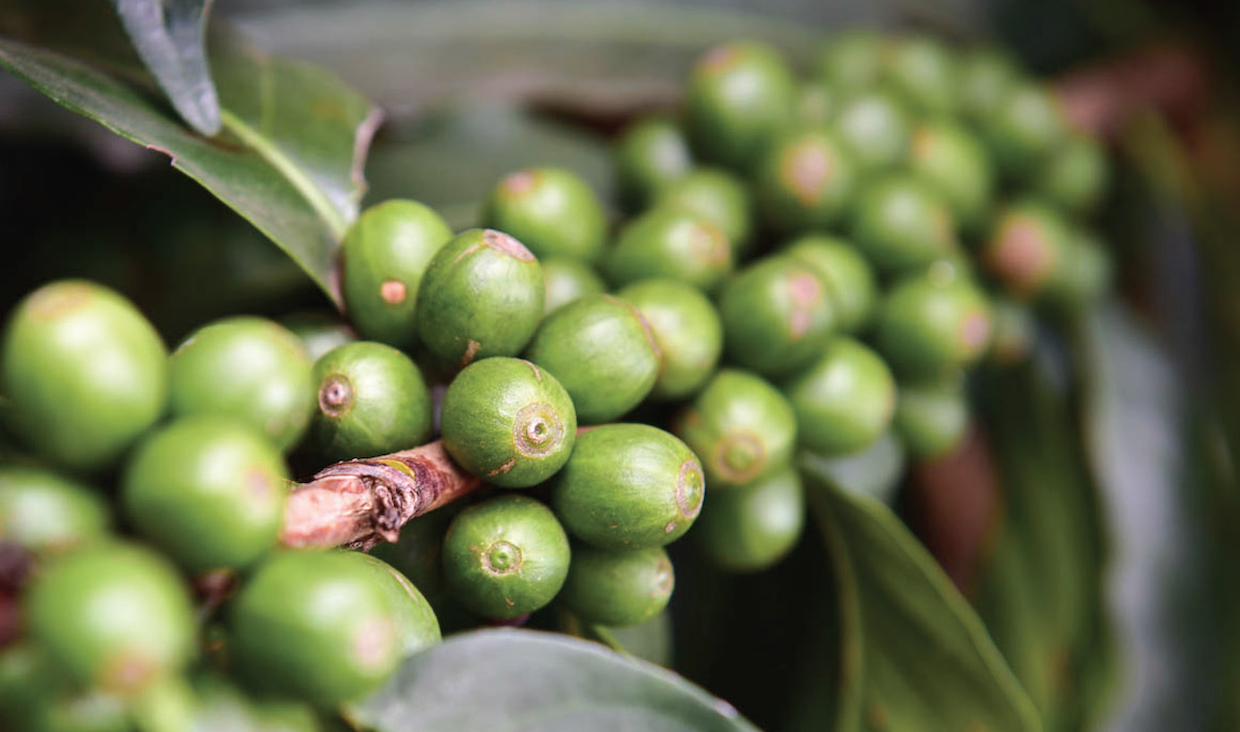
Nariño’s agro-ecological conditions are extraordinary, with a median elevation of more than 1,900 meters and cool temperatures that contribute to a gradual maturation of the coffee cherry. Photo by Neil Palmer/CIAT for CRS.
Locals say three other communities in Nariño’s “red zone” — Leiva, Policarpa and Rosario — may have the best conditions for producing quality coffee in the entire region. If Colombia’s peace process delivers the stability the region so richly deserves after so many years of conflict, part of the dividend will be the expansion of opportunity in the coffee sector.
Nariño’s coffee culture has begun to blossom in beautiful ways, generating more value for everyone along the chain. And separation — by variety, by farm, by community and by profile — is driving the process.
“There is no turning back now,” says Hill. “The coffees are already incredible, and Nariño is just getting started.”
Michael Sheridan
Michael Sheridan is the Director of Sourcing and Shared Value at Intelligentsia Coffee. He also orchestrates the Extraordinary Coffee Workshop (ECW), an annual supply chain summit that convenes Intelligentsia’s Direct Trade partners from around the world. Prior to joining Intelligentsia, Sheridan led coffee programming for the international development agency CRS for more than a decade. He is a member of the SCA’s Sustainability Center Advisory Council, and has served as a volunteer advisor to the industry on sustainability issues since 2012.
Comment
1 Comment
Comments are closed.



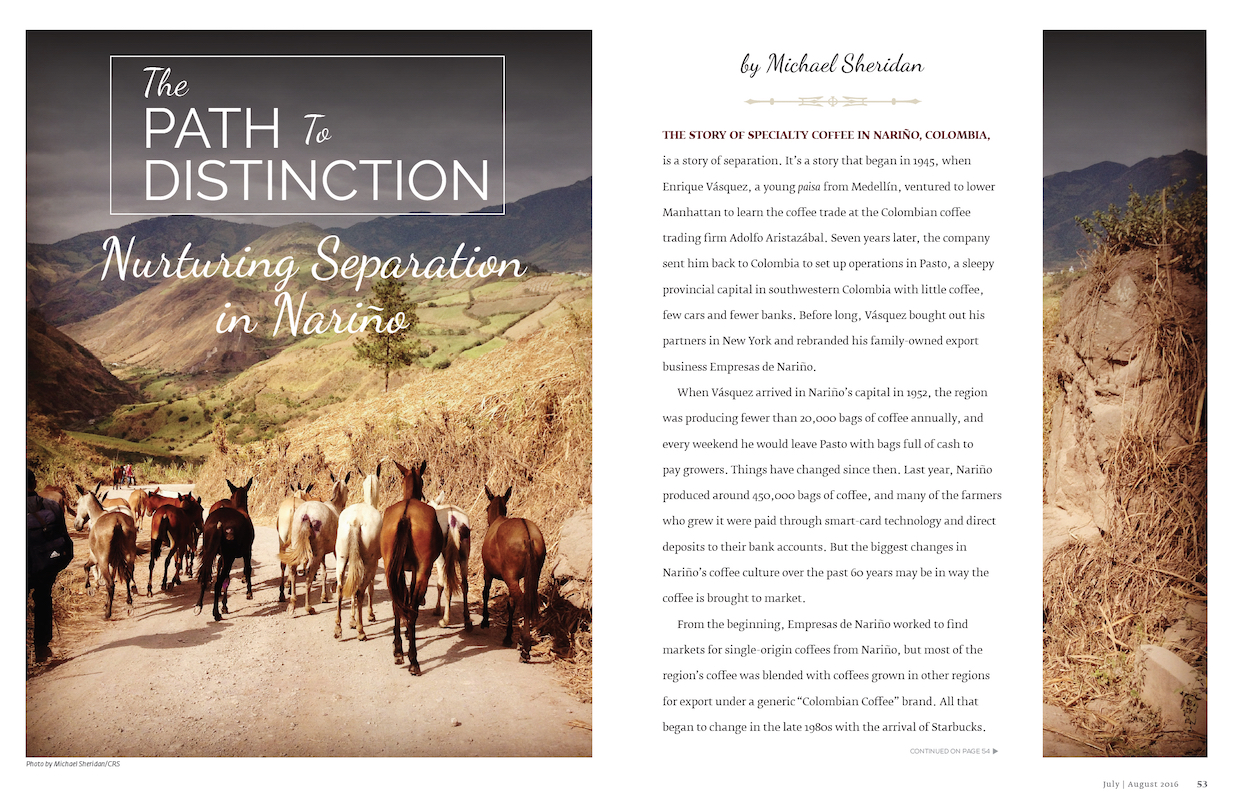

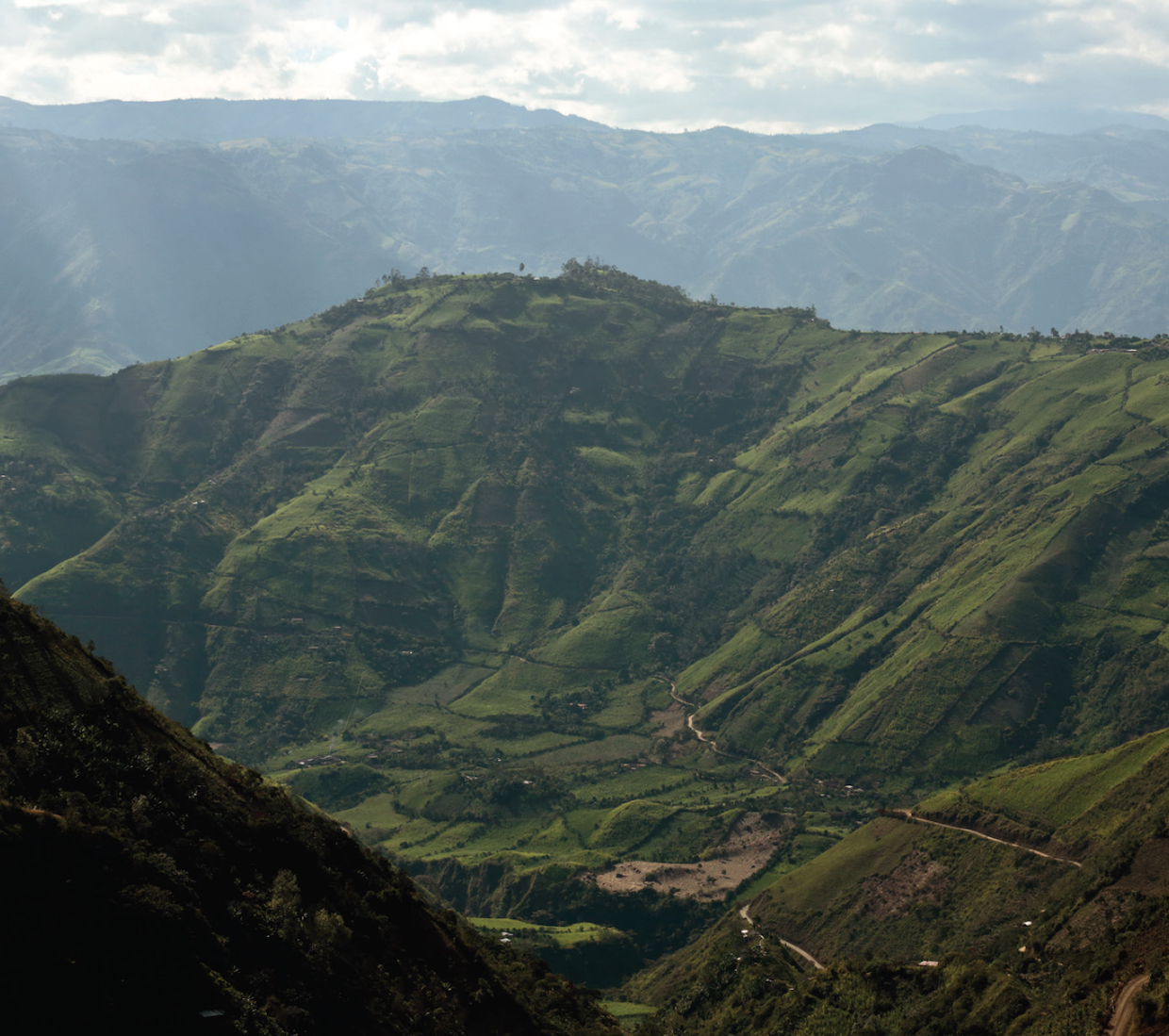
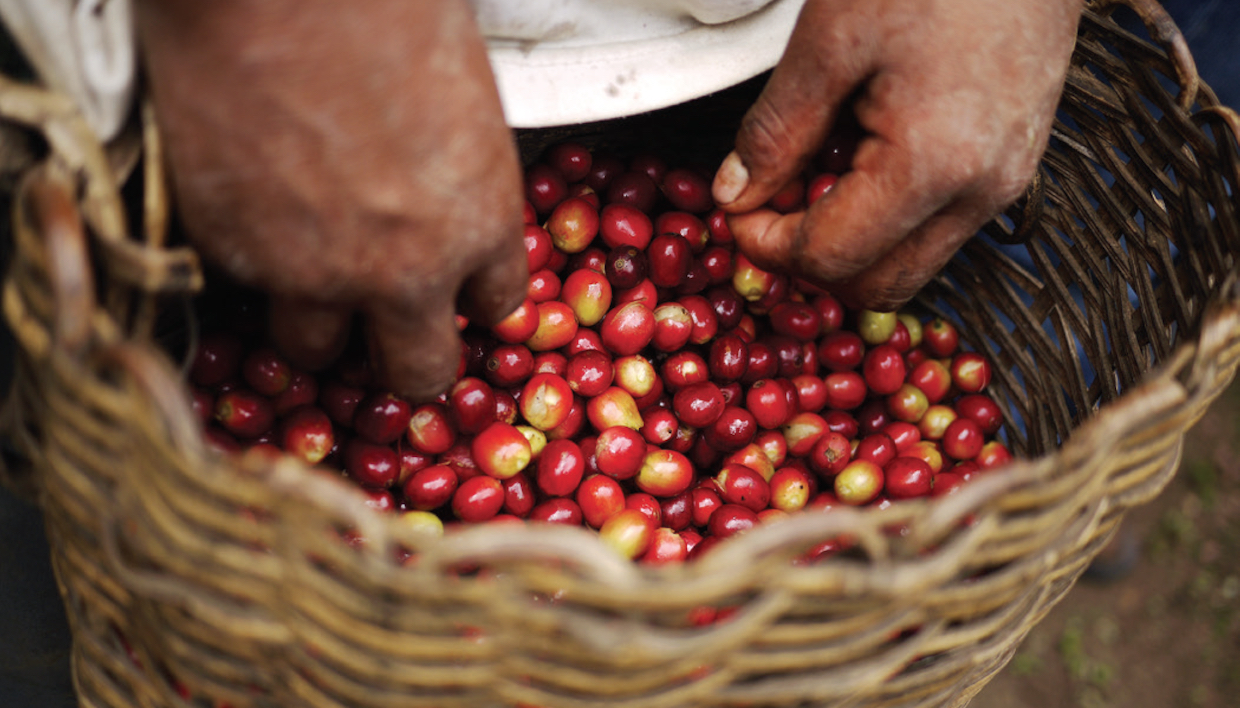



Never mind fussing over “global warming”, carbon emissions (just exhale less….) and the like
THIS is what needs to happen all over to cure the coffee price structure issues. It does not specifically state, but I am VERY certain these growers are all getting well compensated for their labours.